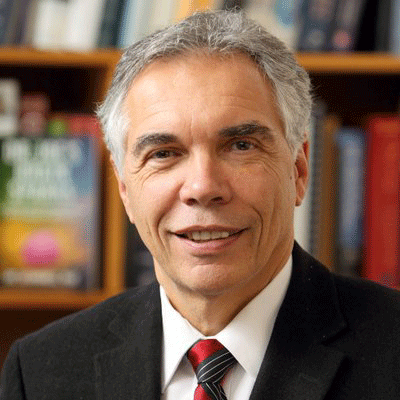Editor’s Note: Every year, McGill awards prizes for the dissemination and popularization of research through media or through public engagement. Last year, Dr. Joe Schwarcz was awarded the Outstanding Achievement honour for the Principal’s Prize for Public Engagement Through Media. In the following article, Dr. Joe writes about the importance of explaining science to the public.
Whether it be after a public lecture or on my radio show, questions often begin with “Is it true that…?” Invariably the answer is “No.” The query is commonly triggered either by a media account that didn’t get the facts quite right about a piece of legitimate research, or one that sensationalized the findings to attract readers.

Recently, I was asked about a headline featured on the Facebook page of an organization that goes by the name of The Hearty Soul. That page has over a million followers so it can have considerable impact! The seductive headline was, Study: Eating Chocolate and Drinking Red Wine Could Help Prevent Aging.
Visitors who didn’t get beyond the headline, which I suspect were most, were likely to leave with the message that researchers had confirmed the benefits of chocolate and red wine in preventing aging. They may even have applied the findings to their own life. But the fact is that the study in no way showed that eating chocolate or drinking red wine prevents aging!
What the researchers did demonstrate, was that when cells grown in tissue culture age, some of their youthful features are restored upon exposure to chemicals called “resveralogues.” But rejuvenation of cells in a culture dish is a long way from preventing aging in humans.
And what is the chocolate and wine connection? Both contain resveratrol, a compound that has been extensively studied for health benefits based on some intriguing preliminary findings in rodents. However, any noted benefits only occurred with doses that were far greater than achievable by food or beverage intake. That’s why researchers decided to play some molecular roulette and synthesize compounds that had a similarity to resveratrol, the “resveralogues,” with hopes of seeing greater potency at lower doses.
It was the activity of these compounds in laboratory experiments that was reported in the paper published in BMC Cell Biology, a very reputable medical journal. The findings certainly are of academic interest, but have nothing to do with chocolate or red wine, neither of which contains the compounds that were tested. Nothing about this study demonstrates that eating chocolate or drinking wine counters aging, and indeed the authors do not make that claim at all. But the sensationalized headline makes just that claim.
Why bring up this story? Because it is a prime example of the need to interpret scientific studies for the public in a proper fashion and thereby hopefully prevent misinformation from taking flight. The media has a responsibility to cover stories accurately, but reporters are often not well enough versed in science to appreciate the nuances of research.
Scientists can play a role either by taking the time to respond to reporters’ questions, or by taking the bull by the horns and getting involved themselves in interacting with the public. After all, the purpose of all research is to improve people’s lives and the public has a right to know what scientists are doing on their behalf.
Making sure that information being transmitted is not misinterpreted is a daunting task. I was alerted to that early in my career when on one of my radio shows I had talked about carmine, a dye that can be extracted from the cochineal insect which I mentioned is smaller than a cockroach. I then went on to explain that this natural substance is sometimes used to colour strawberry ice cream.
As it turned out, the cockroach comparison was not the most appropriate. I discovered that a couple of days later when I received a letter from a listener telling me that she had relayed the story to her friend who refused to believe it. She now wanted me to confirm in writing that there are cockroaches in chocolate ice cream!
Of course there are no cockroaches in chocolate ice cream and nobody ever said there were. While that particular muddled interpretation did not lead to any serious consequences, misunderstandings about genetic modification, food additives, dietary supplements or environmental toxins can cause confusion and often undue worries.
Even more troubling are the various websites and circulating emails that offer “natural cures” for cancer without any evidence. The seductive claims can steer patients away from effective therapies, often with tragic results. Such preying on people’s desperation has sensitized me to the importance of reaching out to the media to correct inaccuracies in reporting and to highlight the need to expose “fake news”.
It seems I have had some success along these lines given that my efforts have been recognized by the Principal’s Prize for Engagement Through the Media. That recognition is very much appreciated and has motivated me to be even more vigilant about the accurate portrayal of science.
While demystifying science for the public is one of the mandates of the McGill Office for Science and Society, I think it is also the responsibility of individual researchers to describe their work to lay audiences in an understandable fashion and confront misinformation whenever they encounter it. Everyone gains when Ivory Tower gates are opened and scientists venture out to engage the media.
